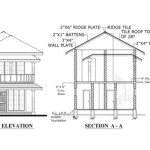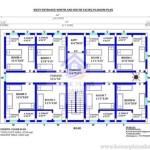Essential Aspects of House Construction Planning
Planning is crucial to ensure a successful house construction project. Proper planning can save you time, money, and stress in the long run. Here are the essential aspects you need to consider when planning your house construction:
1. Determine Your Budget and Financing
The first step is to establish a realistic budget for your project. Consider the cost of materials, labor, permits, and any other expenses. Explore different financing options, such as mortgages or construction loans, and consult with financial experts to secure the necessary funds.
2. Choose a Location and Plan
Select a suitable location for your house, considering factors like proximity to amenities, the availability of utilities, and the surrounding environment. Work with an architect or designer to create a detailed plan that includes the layout, dimensions, and materials for your home.
3. Obtain Building Permits
Building permits are required by most municipalities before construction can begin. Submit the necessary plans and pay the required fees to obtain the permits. This step ensures that your project meets local building codes and regulations.
4. Hire a Contractor
Choose a qualified contractor with experience in house construction. Get multiple bids, check references, and review the contractor's license and insurance before signing a contract. The contractor will be responsible for overseeing the construction process and ensuring its quality.
5. Establish a Timeline
Create a realistic timeline for your project, including the start and end dates. Factor in the availability of materials, labor, and the contractor's schedule. Set milestones and track progress regularly to stay on schedule.
6. Secure Utilities
Contact utility companies to ensure that your new home will have access to electricity, water, gas, and other essential services. Plan the location and installation of utilities in coordination with your contractor.
7. Monitor Construction Progress
Stay informed about the progress of your project. Visit the construction site regularly, inspect the work, and communicate any concerns or questions to the contractor. This active involvement helps ensure that the construction meets your expectations.
8. Prepare for Inspections
Throughout the construction process, various inspections will be required by the building department. Schedule these inspections in advance and ensure that the work meets the necessary standards to pass.
9. Finalize and Occupy
Once construction is complete, finalize the project by obtaining a certificate of occupancy. This certificate verifies that the home is habitable and meets all building codes. Inspect the home thoroughly before moving in and note any issues that need to be addressed.
10. Warranty and Maintenance
Most contractors offer warranties on their work. Document any warranties and keep a record of maintenance activities to ensure that your home remains in good condition. Regular maintenance can extend the lifespan of your home and prevent costly repairs.
Remember, house construction planning is an iterative process that requires careful consideration and attention to detail. By following these essential aspects, you can increase the likelihood of a successful and rewarding construction project.
House Plans How To Design Your Home Plan

House Plans How To Design Your Home Plan

House Plans How To Design Your Home Plan

House Plans How To Design Your Home Plan

Diffe Types Of Building Plans The Constructor

House Plans Home Residential

Where You Can Buy House Plans Live Home 3d

Small House Design 2024001 Pinoy Eplans Floor Plans

You Ve Decided To Build A House Now What The Designers

House Plans How To Design Your Home Plan
Related Posts








